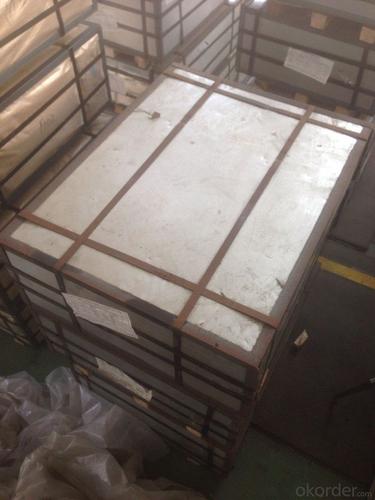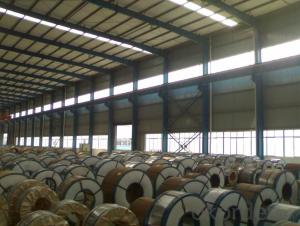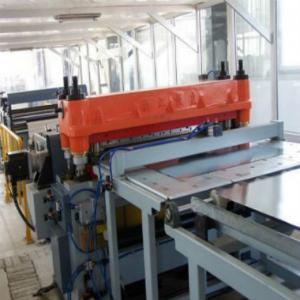Electrolytic Tinplate SPCC Coils with 0.235 thickness
- Loading Port:
- Tianjin
- Payment Terms:
- TT or LC
- Min Order Qty:
- 25 m.t.
- Supply Capability:
- 1000 m.t./month
OKorder Service Pledge
OKorder Financial Service
You Might Also Like
1.Structure of Electrolytic Tinplate Sheets SPCC Coils with 0.235 thickness Description
Electrolytic Tinplate Sheets is one of the metal packing materials, which is widely used for making painting cans ,chemical package cans , electrical cable ,battery and metal printing etc.
2. Main Features of Electrolytic Tinplate Sheets SPCC Coils with 0.235 thickness
Steady and high quality
Fast shipment
Good experience for export work
For the surface, Plate uniform in thickness,uniform and smooth tin coating, without flaws,rusts,scratch,wave,nick of tin coating etc.
Price competitive
3.Electrolytic Tinplate Sheets SPCC Coils with 0.235 thickness Images

4. Electrolytic Tinplate Sheets SPCC Coils with 0.235 thickness Specification
Standard : GB2520-2000 ,JIS G3303
Steel type : SPCC
Coating : 2.8/2.8
Surface: Bright, Stone ,
Thickness:0.31
Width :600MM~1000MM
Temper : T1~T5
Package: tinplate wrapped completely with an inner cover of plastic or waterproof papers with vorners protected with metal angels.
5.FAQ of Electrolytic Tinplate Sheets SPCC Coils with 0.235 thickness
A. What is the package of tinplate? (Referred as below)
For sheets, thin plastic film + rust-proof paper + metallic cover + metallic angles+ steel band strips + fumigated wooden pallet.
For coil, thin plastic film + rust proof paper + metallic cover + steel band strips + fumigated wooden pallet
B. The surface of tinplate could you supply?
Stone finish, Bright finish, Matte finish, Silver finish
C. What quantity is the minimum order of tinplate?
Usually, the minimum quantity is 25MT. For special case, consult with us.
D. Can it make to be BA or CA for annealing?
Yes, both can do with.
- Q: How does tinplate perform in microwave ovens?
- Tinplate should not be used in microwave ovens as it is a metal, and metals can cause sparks or damage to the appliance.
- Q: Can tinplate be used for high-speed packaging lines?
- Yes, tinplate can be used for high-speed packaging lines. Tinplate, known for its strength, durability, and corrosion resistance, is commonly used in the food and beverage industry for packaging products that require high-speed production. Its smooth surface allows for efficient printing and labeling, making it a suitable choice for high-speed packaging lines.
- Q: Can tinplate be used for packaging products with specific storage requirements?
- Yes, tinplate can be used for packaging products with specific storage requirements. Tinplate is a durable and corrosion-resistant material that provides excellent protection for products from light, moisture, and oxygen. It can maintain the quality and freshness of the stored items, making it suitable for packaging products with specific storage requirements such as food, beverages, and chemicals.
- Q: How does tinplate perform in terms of insulation properties?
- Tinplate does not perform well in terms of insulation properties as it is a good conductor of heat and electricity.
- Q: What are the common quality standards for tinplate?
- The common quality standards for tinplate include factors such as the thickness and uniformity of the tin coating, the absence of defects such as rust, scratches, or dents, the overall strength and durability of the tinplate, and compliance with regulatory standards for food safety.
- Q: What are the typical transportation requirements for tinplate?
- The typical transportation requirements for tinplate include ensuring proper packaging and protection to prevent damage during handling and shipment. Tinplate is commonly transported in rolled or flat sheets, coils, or fabricated containers, depending on the specific product and its intended use. It is crucial to handle tinplate with care to avoid scratches, dents, or corrosion that could impact its quality. Additionally, proper labeling and documentation are necessary to comply with regulatory and customs requirements during transportation.
- Q: What are the different types of tinplate coatings available?
- There are several types of tinplate coatings available, including electrolytic tinplate (ETP), tin-free steel (TFS), and black plate. ETP is the most commonly used and consists of a thin layer of tin on both sides of the steel substrate. TFS, on the other hand, does not have a tin coating but is instead coated with a layer of chromium or chromium oxide. Black plate refers to steel that has not been coated with any protective layer and is typically used for industrial applications.
- Q: How does tinplate affect the overall weight of packaging?
- Tinplate tends to increase the overall weight of packaging due to its heavier density compared to other materials commonly used for packaging.
- Q: How is tinplate affected by extreme temperatures?
- Tinplate is minimally affected by extreme temperatures, thanks to its excellent heat resistance properties. It can withstand high temperatures without warping, melting, or losing its shape, making it a reliable material for a wide range of applications.
- Q: Can tinplate be used for consumer electronics packaging?
- Yes, tinplate can be used for consumer electronics packaging. Tinplate is a type of steel coated with a thin layer of tin, which provides durability, corrosion resistance, and a visually appealing finish. It is commonly used for packaging various consumer goods, including electronics, due to its ability to protect the products from damage and moisture. Additionally, tinplate can be easily shaped into different forms and sizes, making it suitable for packaging various electronic devices.
Send your message to us
Electrolytic Tinplate SPCC Coils with 0.235 thickness
- Loading Port:
- Tianjin
- Payment Terms:
- TT or LC
- Min Order Qty:
- 25 m.t.
- Supply Capability:
- 1000 m.t./month
OKorder Service Pledge
OKorder Financial Service
Similar products
Hot products
Hot Searches
Related keywords



























